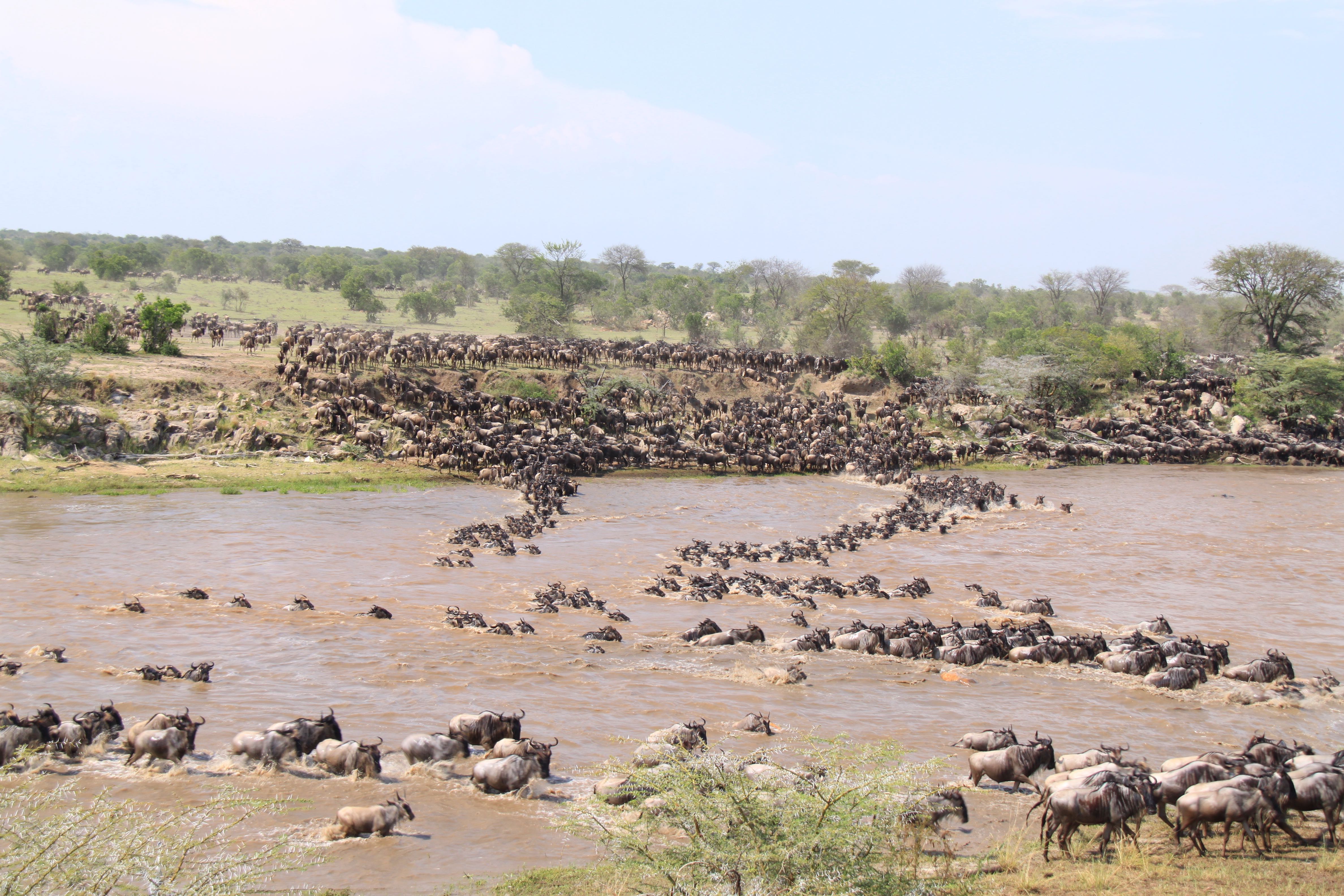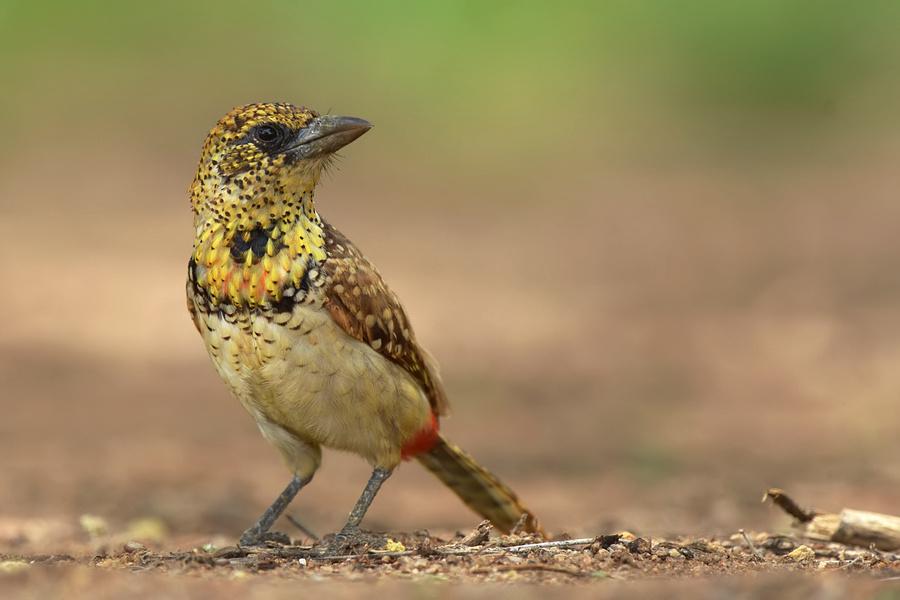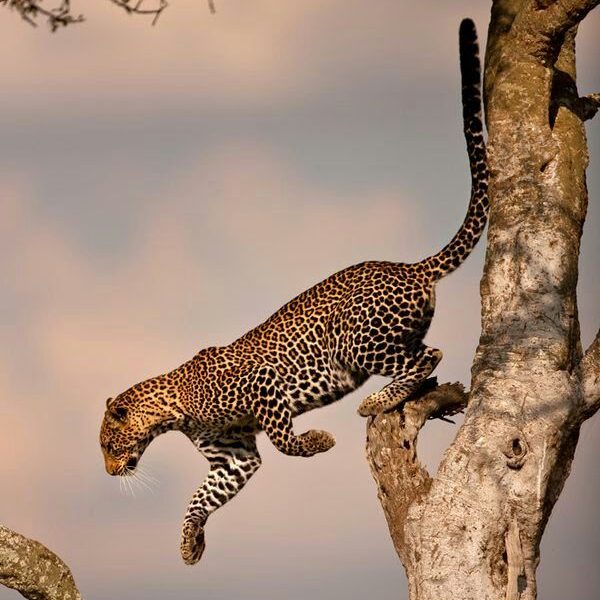On Safari in Serengeti National Park
The word “Serengeti” is derived from the Masai word for “endless plains”. But actually, the landscape of the Serengeti offers much more variety then most people think. In reality, the ecosystem is comprised of a wide range of landscapes, with areas of acacia forest, riverine vegetation, soda lakes and granite mountains. Each area has its own different character and range of wildlife and it is often worth combining two or three different areas in a single safari in order to take advantage of this variety. It’s here where yearly more than 2 million animals migrate in a circle of about 800 km, following the rain, searching for water and food. Without a doubt, the vastness of the Serengeti will leave you breathless. When the grazing is good, you’ll be sure to spot wildebeest, zebra, gazelle, ostrich, cheetah, hyena, leopard, lion, jackal and vultures!
Game drives Serengeti

Driving along the shores of the Seronera River and Mara River, our game drives are aimed at trying to find unforgettable moments and a glimpse of the way wild animals live and survive. Wildebeest crossing the river, a hunting cheetah, lion or any other predator or the magnificent view of the silhouette of a giraffe at the horizon. You will have a chance to see Nile Crocodiles (sometimes more than 6 meters long!) waiting for animals to come drinking or crossing and ambush them. You will enjoy areas that are not known to the greater public and are therefore perfect for an experience off the beaten path. It’s here where you can concentrate on watching the animals and enjoy nature with all your senses and get the real African feeling. Normally we take breakfast or lunchboxes.
During our trip, we continuously adjust the route of the game drive to the movements of the animals and the presence of migrating animals. There’s so much to see and enjoy in this part of the Serengeti! You can easily spend 4-5 whole days in this area!
Please click here to see our Migration Calendar and schedule to plan best time and route for your safari. For an actual live feed, you can have a look at HerdTrackerWildebeest Migration Live Feed.
Game drives Northern Serengeti
Our route follows the migration of the animals on the plains along the shores of the Mara River. Crocodiles are waiting for wildebeest who risk the crossing. With good planning and a bit of luck, you will be witnessing a spectacle that is hard to put in words. Watching a crossing and hear all the noises is a very impressive experience that you’ll never forget! This is also the area where you can be quite sure to see a hunter like a hyena, cheetah, lion or leopard. If you’re lucky you might even spot a leopard climbing in a yellow acacia tree!
Depending on how many days you will spend in the Serengeti, we can visit the Bologonja wells, an important course of water for migrating animals. This part of the Serengeti has beautiful sceneries and you can drive here for hours without seeing another car.

Game drives Central Serengeti
The Seronera Vally, endless green grasslands, as far as you can see. Large numbers of grazing wildebeest, zebras, giraffes and gazelles moving around. We will go off the beaten track to areas where not many people go. Here you will find the “Kopjes”, outcrops of granite that stick out like rocky islands in a sea of grass. The Kopjes provide habitat for many creatures because of the presence of a variety of plants, caves for dwelling, water, and a point where you might find a lion! Very photogenic!
Game drives Southern Serengeti
There is so much to see in this part of the Serengeti. About mid-February through to end March more than 1.5 million wildebeest deliver new calves at the estimated rate of 8,000 new-borns per day in the area around Ndutu Lake. Of course, hyenas, jackals, lion, birds of prey and many others are out in force as the birthing begins. Imagine the hunts you might be able to see…
Although you won’t find large migrating herds here between June and November, this area is still worth visiting. Elephants, giraffes, impalas, all kind of wild cats and a large number of birds populate this part of the Serengeti throughout the year.
Birding Safaris Serengeti

The Serengeti has more than 500 bird species recorded. The Serengeti-Mara ecosystem is one of Africa’s Endemic Bird Areas (land important for habitat-based bird conservation), hosting five bird species found nowhere else. In Seronera area right in the middle of the park, the grey-breasted spurfowl is among the common roadside birds. In forest areas, you will catch sight of flocks of Fischer’s lovebird and unique rufous-tailed weavers. Two other species that can only be found in Serengeti are the grey-crested helmet-shrike and the Usambiro barbet.
Best time for bird watching in Serengeti: birding in the Serengeti is good year-round, but at its very best during November through April. Not only is this when European and North African migratory birds are present, but it is also nesting time for resident species. This makes it easy to spot birds in their breeding plumage.
Please have a look at our example itineraries




